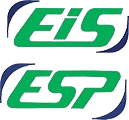Exploring the Latest Advances in Laser Cutting Technology
Cutting is an activity that is employed in sectors ranging from industrial manufacturing to health care. This is also a task that demands precision and speed. This is where we can place the increasing utility of laser cutting technology.
Technology hasn’t failed to make us wonder at any point. But when laser tech was introduced in the 1960s it wasn’t much of a big deal for the bulkiness and power consumption of the laser generators. These CO2 generators took a long route to meet their current successor which is the fibre laser cutters.
Evolution in a nutshell
The first laser cutter was demonstrated by Kumar Patel an electrical engineer at Bell Labs in around 1964-1965. The limited applications and features of this carbon dioxide-based model appeared to be a challenge for scientists of the time. It was only with the application of these laser cutters on thin steel sheet by Peter Houldcroft, that these equipment found applications in industrial sectors. From then on, it took fairly enough time to shift towards fiber lasers that used a solid-state medium for cutting. These laser cutters are far more efficient than the traditional CO2 models in terms of precision, cutting speed, and energy utilization.
Material revolution: Beyond metals
The initial applications of laser cutting were on drilling holes in diamond dyes and cutting metals. In recent years laser cutting has found application in a variety of materials like plastic, ceramics, and organic materials. Laser cutting in Abu Dhabi has also been able to leverage these applications in the field of fashion and medical research.
Portability and convenience
As mentioned earlier laser cutters were bulkier if we look at traditional CO2-based cutters. But this has changed drastically in the recent past. Because of miniaturization in laser cutters handheld compact lasers were introduced to the market. This has heralded more inclusivity in laser cutting with small businesses and individuals getting access to this technology.
Precision and accuracy: Micro and Nanoscale cutting
The latest advances in laser cutting with increased precision of fiber laser cutters have opened up an avenue to work on smaller and more intricate components. Employing such precision technology manufacturers have been able to find its applications in electronics. Medical equipment with near zero tolerance for errors also finds this technological advance helpful. Laser cutting in Abu Dhabi also works smartly to leverage this potential in the best ways.
Integrated System and Automation
Integration of systems like robotics, artificial intelligence, and advanced software has enabled laser cutting into the path of automation. Design files can be read using these systems to cut intrinsic design with accuracy and speed. The latest laser cutting technology has already incorporated automation, real-time monitoring, and adjustments into its work.
Sustainability and laser cutting
Sustainability is an indispensable element of modern technology. Laser cutting in Abu Dhabi has not fallen behind in this respect. Energy-efficient fiber lasers and filtration systems that control emissions are the contributions of the latest laser-cutting technologies for a sustained future.
With these modern advances laser cutting has established its presence with versatility, efficiency, convenience, and sustainability measures. The future upholds more advancements in this regard.

